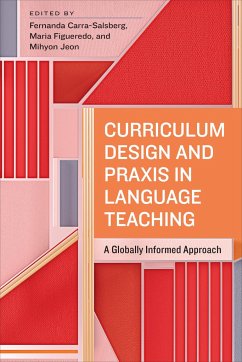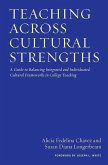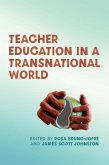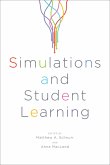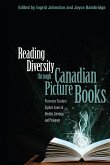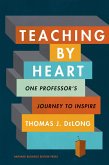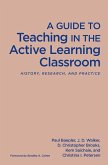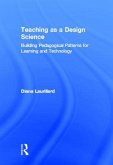Curriculum Design and PRAXIS in Language Teaching
A Globally Informed Approach
Herausgeber: Carra-Salsberg, Fernanda; Jeon, Mihyon; Figueredo, Maria
Curriculum Design and PRAXIS in Language Teaching
A Globally Informed Approach
Herausgeber: Carra-Salsberg, Fernanda; Jeon, Mihyon; Figueredo, Maria
- Gebundenes Buch
- Merkliste
- Auf die Merkliste
- Bewerten Bewerten
- Teilen
- Produkt teilen
- Produkterinnerung
- Produkterinnerung
This edited collection bridges successful teaching and learning ideas across the fields of languages, literatures, and linguistics.
Andere Kunden interessierten sich auch für
![Teaching Across Cultural Strengths Teaching Across Cultural Strengths]() Alicia Fedelina ChávezTeaching Across Cultural Strengths195,99 €
Alicia Fedelina ChávezTeaching Across Cultural Strengths195,99 €![Teacher Education in a Transnational World Teacher Education in a Transnational World]() Teacher Education in a Transnational World107,99 €
Teacher Education in a Transnational World107,99 €![Simulations and Student Learning Simulations and Student Learning]() Simulations and Student Learning91,99 €
Simulations and Student Learning91,99 €![Reading Diversity Through Canadian Picture Books Reading Diversity Through Canadian Picture Books]() Reading Diversity Through Canadian Picture Books59,99 €
Reading Diversity Through Canadian Picture Books59,99 €![Teaching by Heart: One Professor's Journey to Inspire Teaching by Heart: One Professor's Journey to Inspire]() Thomas J. DelongTeaching by Heart: One Professor's Journey to Inspire26,99 €
Thomas J. DelongTeaching by Heart: One Professor's Journey to Inspire26,99 €![A Guide to Teaching in the Active Learning Classroom A Guide to Teaching in the Active Learning Classroom]() Paul BaeplerA Guide to Teaching in the Active Learning Classroom195,99 €
Paul BaeplerA Guide to Teaching in the Active Learning Classroom195,99 €![Teaching as a Design Science Teaching as a Design Science]() Diana LaurillardTeaching as a Design Science197,99 €
Diana LaurillardTeaching as a Design Science197,99 €-
-
-
This edited collection bridges successful teaching and learning ideas across the fields of languages, literatures, and linguistics.
Hinweis: Dieser Artikel kann nur an eine deutsche Lieferadresse ausgeliefert werden.
Hinweis: Dieser Artikel kann nur an eine deutsche Lieferadresse ausgeliefert werden.
Produktdetails
- Produktdetails
- Verlag: University of Toronto Press
- Seitenzahl: 290
- Erscheinungstermin: 7. April 2022
- Englisch
- Abmessung: 229mm x 152mm x 25mm
- Gewicht: 522g
- ISBN-13: 9781487528904
- ISBN-10: 1487528906
- Artikelnr.: 62220953
- Verlag: University of Toronto Press
- Seitenzahl: 290
- Erscheinungstermin: 7. April 2022
- Englisch
- Abmessung: 229mm x 152mm x 25mm
- Gewicht: 522g
- ISBN-13: 9781487528904
- ISBN-10: 1487528906
- Artikelnr.: 62220953
Edited by Fernanda Carra-Salsberg, Maria Figueredo, and Mihyon Jeon
Introduction
Section I: Critical Approaches to Curriculum and Pedagogy in Language and
Pre-Service Teacher Education
1. International by Default: Best Practices for Creating Globally
Responsible Students in the Language Classroom
Shobna Nijhawan
2. Socratic Circles, Critical Literacy, and Culturally Responsive Teacher
Education
Hyunjung Shin and Geraldine Balzer
3. Developing Future Language Educators’ Critical Language Awareness in
Cross-College Discussions
Anuradha Gopalakrishnan and Leah Shepard-Carey
Section II: Inter-Artistic Approaches to Teaching and Learning Language
4. Inter-Artistic Approaches to Teaching Hispanic Culture: Literature and
Music
Victoria Wolff
5. The Dialogues between Literature and Music: Teaching and Learning
Synesthetically
Maria Figueredo
6. When Art and English Language Instructors Collaborate
Tamara Warhol and Katherine Rhodes Fields
Section III: Experiential Education in Language Teaching
7. Communicating and Understanding the Other through Experiential
Education: Portuguese Language and Culture in Toronto
Maria João Dodman, Inês Cardoso, and Vander Tavares
8. Using Experiential Learning Theory as a Framework for Undergraduate
Academic Communication Development
Maria Herke, Deanna Wong, and Susan Hoadley
9. Words at Play: Language Learning at Work
Agustina Tocalli-Beller
Section IV: Technology-Enhanced Teaching in Language Classrooms
10. Building Capacity for Twenty-First Century Digital Language Teaching
Practices
Geoff Lawrence
11. Digital Storytelling Using Computer-Based Technology in Second Language
Learning
Yujeong Choi and Na-Young Ryu
12. A Pedagogical Module for a Place-based and Multiliteracies-based
Digital Storytelling Project for Language Learning
Angela Lee-Smith
13. Using Facebook as a Resource for e-Tandem Language Learning in Higher
Education
Christine Schallmoser and Pia Resnik
Section V: Online and Blended Language Learning
14. Student Reception of and Response to Fully Online Language Courses
Mihyon Jeon and Ahrong Lee
15. Preparing Future Global Professionals: Technology-Enhanced Group PBL
Pedagogy
Monica Broido and Daniel Portman
16. A Guide to Synchronous Online Language Teaching
Seung-Eun Chang
Section VI: Designing Classroom Resources, Activities, and Assessment Tools
for Student Engagement
17. Classroom-based Assessment Practices of College Korean Language
Teachers: A Qualitative Study
Hye-Sook Wang
18. Classroom Activities for Student Engagement: "5 Minutes" and Survey
Project
Myounghee Cho
19. Conceptualizing the Significance of Studying Translingual,
Autobiographic Narratives in Postsecondary ESL Classrooms
Fernanda Carra-Salsberg
20. Teaching with Case Studies
Lynn Burley
Conclusion
Abstracts
List of Contributors
Section I: Critical Approaches to Curriculum and Pedagogy in Language and
Pre-Service Teacher Education
1. International by Default: Best Practices for Creating Globally
Responsible Students in the Language Classroom
Shobna Nijhawan
2. Socratic Circles, Critical Literacy, and Culturally Responsive Teacher
Education
Hyunjung Shin and Geraldine Balzer
3. Developing Future Language Educators’ Critical Language Awareness in
Cross-College Discussions
Anuradha Gopalakrishnan and Leah Shepard-Carey
Section II: Inter-Artistic Approaches to Teaching and Learning Language
4. Inter-Artistic Approaches to Teaching Hispanic Culture: Literature and
Music
Victoria Wolff
5. The Dialogues between Literature and Music: Teaching and Learning
Synesthetically
Maria Figueredo
6. When Art and English Language Instructors Collaborate
Tamara Warhol and Katherine Rhodes Fields
Section III: Experiential Education in Language Teaching
7. Communicating and Understanding the Other through Experiential
Education: Portuguese Language and Culture in Toronto
Maria João Dodman, Inês Cardoso, and Vander Tavares
8. Using Experiential Learning Theory as a Framework for Undergraduate
Academic Communication Development
Maria Herke, Deanna Wong, and Susan Hoadley
9. Words at Play: Language Learning at Work
Agustina Tocalli-Beller
Section IV: Technology-Enhanced Teaching in Language Classrooms
10. Building Capacity for Twenty-First Century Digital Language Teaching
Practices
Geoff Lawrence
11. Digital Storytelling Using Computer-Based Technology in Second Language
Learning
Yujeong Choi and Na-Young Ryu
12. A Pedagogical Module for a Place-based and Multiliteracies-based
Digital Storytelling Project for Language Learning
Angela Lee-Smith
13. Using Facebook as a Resource for e-Tandem Language Learning in Higher
Education
Christine Schallmoser and Pia Resnik
Section V: Online and Blended Language Learning
14. Student Reception of and Response to Fully Online Language Courses
Mihyon Jeon and Ahrong Lee
15. Preparing Future Global Professionals: Technology-Enhanced Group PBL
Pedagogy
Monica Broido and Daniel Portman
16. A Guide to Synchronous Online Language Teaching
Seung-Eun Chang
Section VI: Designing Classroom Resources, Activities, and Assessment Tools
for Student Engagement
17. Classroom-based Assessment Practices of College Korean Language
Teachers: A Qualitative Study
Hye-Sook Wang
18. Classroom Activities for Student Engagement: "5 Minutes" and Survey
Project
Myounghee Cho
19. Conceptualizing the Significance of Studying Translingual,
Autobiographic Narratives in Postsecondary ESL Classrooms
Fernanda Carra-Salsberg
20. Teaching with Case Studies
Lynn Burley
Conclusion
Abstracts
List of Contributors
Introduction
Section I: Critical Approaches to Curriculum and Pedagogy in Language and
Pre-Service Teacher Education
1. International by Default: Best Practices for Creating Globally
Responsible Students in the Language Classroom
Shobna Nijhawan
2. Socratic Circles, Critical Literacy, and Culturally Responsive Teacher
Education
Hyunjung Shin and Geraldine Balzer
3. Developing Future Language Educators’ Critical Language Awareness in
Cross-College Discussions
Anuradha Gopalakrishnan and Leah Shepard-Carey
Section II: Inter-Artistic Approaches to Teaching and Learning Language
4. Inter-Artistic Approaches to Teaching Hispanic Culture: Literature and
Music
Victoria Wolff
5. The Dialogues between Literature and Music: Teaching and Learning
Synesthetically
Maria Figueredo
6. When Art and English Language Instructors Collaborate
Tamara Warhol and Katherine Rhodes Fields
Section III: Experiential Education in Language Teaching
7. Communicating and Understanding the Other through Experiential
Education: Portuguese Language and Culture in Toronto
Maria João Dodman, Inês Cardoso, and Vander Tavares
8. Using Experiential Learning Theory as a Framework for Undergraduate
Academic Communication Development
Maria Herke, Deanna Wong, and Susan Hoadley
9. Words at Play: Language Learning at Work
Agustina Tocalli-Beller
Section IV: Technology-Enhanced Teaching in Language Classrooms
10. Building Capacity for Twenty-First Century Digital Language Teaching
Practices
Geoff Lawrence
11. Digital Storytelling Using Computer-Based Technology in Second Language
Learning
Yujeong Choi and Na-Young Ryu
12. A Pedagogical Module for a Place-based and Multiliteracies-based
Digital Storytelling Project for Language Learning
Angela Lee-Smith
13. Using Facebook as a Resource for e-Tandem Language Learning in Higher
Education
Christine Schallmoser and Pia Resnik
Section V: Online and Blended Language Learning
14. Student Reception of and Response to Fully Online Language Courses
Mihyon Jeon and Ahrong Lee
15. Preparing Future Global Professionals: Technology-Enhanced Group PBL
Pedagogy
Monica Broido and Daniel Portman
16. A Guide to Synchronous Online Language Teaching
Seung-Eun Chang
Section VI: Designing Classroom Resources, Activities, and Assessment Tools
for Student Engagement
17. Classroom-based Assessment Practices of College Korean Language
Teachers: A Qualitative Study
Hye-Sook Wang
18. Classroom Activities for Student Engagement: "5 Minutes" and Survey
Project
Myounghee Cho
19. Conceptualizing the Significance of Studying Translingual,
Autobiographic Narratives in Postsecondary ESL Classrooms
Fernanda Carra-Salsberg
20. Teaching with Case Studies
Lynn Burley
Conclusion
Abstracts
List of Contributors
Section I: Critical Approaches to Curriculum and Pedagogy in Language and
Pre-Service Teacher Education
1. International by Default: Best Practices for Creating Globally
Responsible Students in the Language Classroom
Shobna Nijhawan
2. Socratic Circles, Critical Literacy, and Culturally Responsive Teacher
Education
Hyunjung Shin and Geraldine Balzer
3. Developing Future Language Educators’ Critical Language Awareness in
Cross-College Discussions
Anuradha Gopalakrishnan and Leah Shepard-Carey
Section II: Inter-Artistic Approaches to Teaching and Learning Language
4. Inter-Artistic Approaches to Teaching Hispanic Culture: Literature and
Music
Victoria Wolff
5. The Dialogues between Literature and Music: Teaching and Learning
Synesthetically
Maria Figueredo
6. When Art and English Language Instructors Collaborate
Tamara Warhol and Katherine Rhodes Fields
Section III: Experiential Education in Language Teaching
7. Communicating and Understanding the Other through Experiential
Education: Portuguese Language and Culture in Toronto
Maria João Dodman, Inês Cardoso, and Vander Tavares
8. Using Experiential Learning Theory as a Framework for Undergraduate
Academic Communication Development
Maria Herke, Deanna Wong, and Susan Hoadley
9. Words at Play: Language Learning at Work
Agustina Tocalli-Beller
Section IV: Technology-Enhanced Teaching in Language Classrooms
10. Building Capacity for Twenty-First Century Digital Language Teaching
Practices
Geoff Lawrence
11. Digital Storytelling Using Computer-Based Technology in Second Language
Learning
Yujeong Choi and Na-Young Ryu
12. A Pedagogical Module for a Place-based and Multiliteracies-based
Digital Storytelling Project for Language Learning
Angela Lee-Smith
13. Using Facebook as a Resource for e-Tandem Language Learning in Higher
Education
Christine Schallmoser and Pia Resnik
Section V: Online and Blended Language Learning
14. Student Reception of and Response to Fully Online Language Courses
Mihyon Jeon and Ahrong Lee
15. Preparing Future Global Professionals: Technology-Enhanced Group PBL
Pedagogy
Monica Broido and Daniel Portman
16. A Guide to Synchronous Online Language Teaching
Seung-Eun Chang
Section VI: Designing Classroom Resources, Activities, and Assessment Tools
for Student Engagement
17. Classroom-based Assessment Practices of College Korean Language
Teachers: A Qualitative Study
Hye-Sook Wang
18. Classroom Activities for Student Engagement: "5 Minutes" and Survey
Project
Myounghee Cho
19. Conceptualizing the Significance of Studying Translingual,
Autobiographic Narratives in Postsecondary ESL Classrooms
Fernanda Carra-Salsberg
20. Teaching with Case Studies
Lynn Burley
Conclusion
Abstracts
List of Contributors
